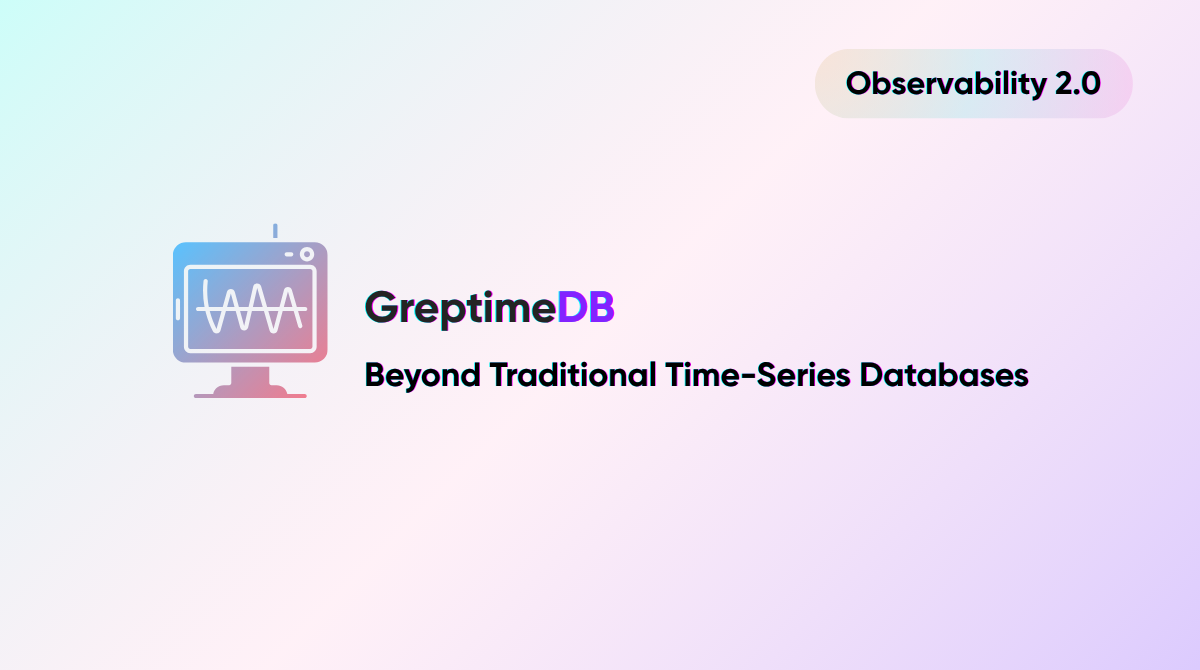
💬 Slack | 🐦 Twitter | 💼 LinkedIn
The Internet of Things generates data at unprecedented scales. A single smart factory can produce terabytes of sensor data daily, while connected vehicles generate continuous streams of telemetry. Traditional databases crumble under this pressure, but GreptimeDB was built specifically for these challenging IoT scenarios.
The IoT Data Challenge
IoT data presents unique characteristics that break conventional database assumptions:
- High-frequency writes: Sensors can generate thousands of readings per second
- Device heterogeneity: Different sensors produce varying data schemas
- Edge constraints: Processing must happen on resource-limited hardware
- Cost sensitivity: Cloud storage and bandwidth costs escalate quickly
Standard relational databases fail here. Even purpose-built time-series solutions struggle with the combination of volume, variety, and resource constraints that define IoT environments.
GreptimeDB's IoT-First Architecture
GreptimeDB Edge represents a fundamental shift in how we think about IoT data management. Instead of forcing all data through centralized cloud processing, it enables intelligent edge processing with cloud synchronization.
Edge Processing Capabilities
The performance numbers tell the story. On a Qualcomm Snapdragon 8295 platform, GreptimeDB Edge achieves:
- 700,000 data points per second ingestion
- 5.7% average CPU usage under full load
- 135MB memory footprint for sustained operations
This isn't just impressive – it's practical. Real automotive deployments show 30-40x compression ratios on CAN bus data, dramatically reducing the bandwidth costs that typically plague IoT deployments.
Data Modeling Best Practices for IoT
Effective IoT data modeling requires understanding cardinality implications. Here's what works:
Primary Key Design
CREATE TABLE sensor_metrics (
device_type STRING,
location STRING,
device_id STRING SKIPPING INDEX,
temperature DOUBLE,
humidity DOUBLE,
battery_level DOUBLE,
ts TIMESTAMP,
PRIMARY KEY(device_type, location),
TIME INDEX(ts)
);Key principles:
- Use low-cardinality columns in primary keys (device_type, location)
- Apply skipping indexes to high-cardinality fields (device_id) for fast lookups
- Store related metrics together in wide tables for better compression
Compression Optimization
GreptimeDB's columnar storage shines with IoT data. Temperature readings from thousands of sensors compress to just 13% of original size, while maintaining query performance. This is crucial when you're dealing with millions of devices generating continuous data streams.
Real-World Implementation: Smart Manufacturing
A leading industrial IoT platform migrated from a traditional InfluxDB + Kafka setup to GreptimeDB's unified architecture. The results:
- 70% reduction in infrastructure costs
- 5x improvement in query performance
- Simplified operations with unified metrics, logs, and events
The key was GreptimeDB's Pipeline engine, which processes raw sensor data at ingestion time, eliminating the need for separate ETL infrastructure.
Edge-to-Cloud Synchronization
Here's where GreptimeDB really differentiates itself. The edge-cloud integrated solution automatically synchronizes processed data to cloud storage, but only the data you need. Local analytics handle real-time decisions, while historical data flows to the cloud for long-term analysis.
This hybrid approach reduces bandwidth costs by 80-90% compared to naive cloud-first architectures, while maintaining the analytics capabilities that drive business value.
Getting Started with IoT Data Pipelines
Start small, scale gradually. GreptimeDB's MySQL compatibility means you can begin with familiar SQL queries and gradually adopt advanced features like vector search and full-text indexing as your use cases evolve.
The future of IoT is edge-intelligent, cloud-connected, and cost-efficient. GreptimeDB provides the foundation to build that future today.
About Greptime
GreptimeDB is an open-source, cloud-native database purpose-built for real-time observability. Built in Rust and optimized for cloud-native environments, it provides unified storage and processing for metrics, logs, and traces—delivering sub-second insights from edge to cloud —at any scale.
GreptimeDB OSS – The open-sourced database for small to medium-scale observability and IoT use cases, ideal for personal projects or dev/test environments.
GreptimeDB Enterprise – A robust observability database with enhanced security, high availability, and enterprise-grade support.
GreptimeCloud – A fully managed, serverless DBaaS with elastic scaling and zero operational overhead. Built for teams that need speed, flexibility, and ease of use out of the box.
🚀 We’re open to contributors—get started with issues labeled good first issue and connect with our community.
